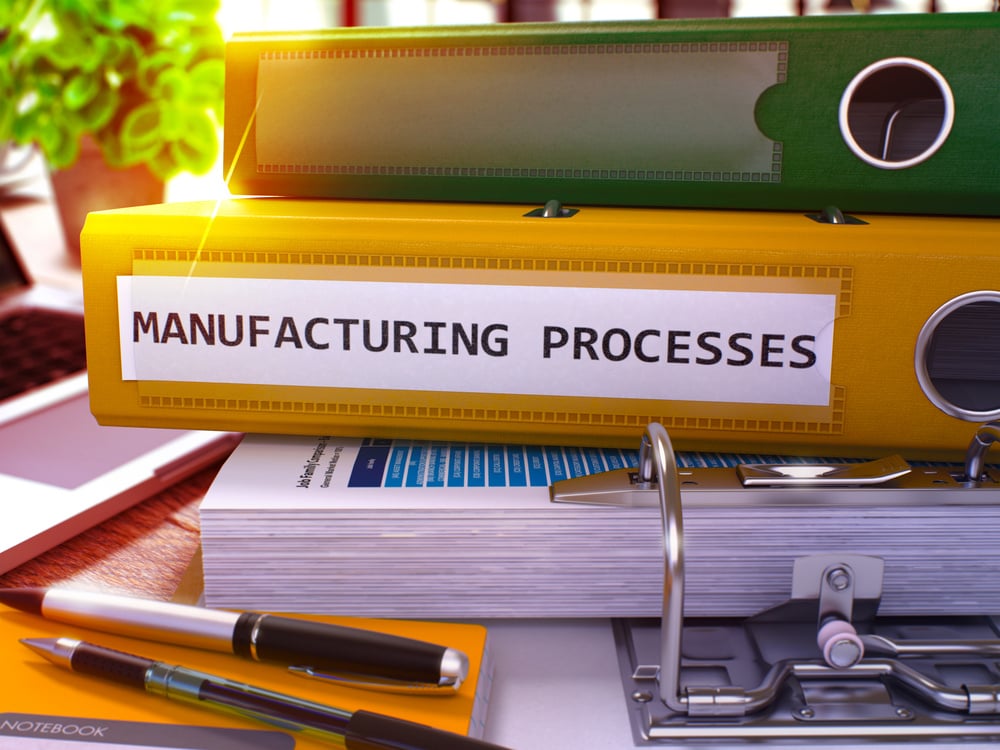Reduce Data Entry Bottlenecks in Manufacturing with Document Scanning
Table of contents
In the high-stakes world of manufacturing, efficiency isn’t just an advantage—it’s a necessity. Yet many enterprises still rely on manual data entry to process critical shipping and receiving documents, creating bottlenecks that slow operations, inflate costs, and introduce errors. These delays are more than just operational headaches; they ripple across departments, affecting everything from inventory management to customer satisfaction.
With real-time visibility now a cornerstone of competitive supply chain operations, outdated paper-based workflows can no longer keep pace. Complex operations require systems that move as fast as the production floor—and manual data entry simply can’t deliver. That’s where document digitization comes in.
This article explores how digitizing logistics documents not only eliminates repetitive input tasks but also enhances accuracy, reduces labor demands, and improves coordination across the supply chain. For CIOs and operations leaders in the manufacturing sector, it’s time to rethink how information flows.
The Hidden Cost of Manual Data Entry
Manual data entry remains a stubborn bottleneck in manufacturing logistics, especially in shipping and receiving processes. When information must be keyed in from paper forms or scanned PDFs, the workflow slows to a crawl—leading to lost time, duplicated efforts, and costly errors. Each delay in processing shipping manifests, bills of lading, or inventory receipts can stall operations and create a backlog that disrupts the entire production schedule.
Beyond simple inefficiency, manual entry often requires multiple staff members to verify and input the same data across different systems. This not only increases labor costs but also introduces room for human error. A misplaced decimal or incorrect part number can throw off inventory counts, delay shipments, or create compliance issues that ripple through the supply chain.
Legacy systems compound these problems. Many manufacturers still rely on outdated software or siloed databases that lack integration with modern ERP platforms. Without a seamless digital backbone, data transfer between departments becomes cumbersome and error-prone, creating even more friction in the workflow.
To explore how modern solutions are addressing these outdated practices, visit our in-depth resource on Document Scanning for Manufacturing.
How Document Digitization Solves the Problem
Digitizing shipping and receiving documents transforms a reactive, manual process into a proactive, automated workflow. By leveraging document scanning and intelligent data capture tools, manufacturers can convert physical paperwork into searchable, structured digital data. These systems automatically extract key information—such as delivery dates, part numbers, and quantities—and route it to the appropriate internal systems in real time.
This automation eliminates the need for repetitive data entry, significantly reducing labor hours and minimizing the risk of errors. With documents digitized and stored in centralized repositories, teams can access information instantly, rather than sifting through file cabinets or chasing down emails. The result is a more streamlined and reliable data flow that supports faster decision-making and greater operational agility.
Additionally, digital document workflows improve compliance and audit readiness. Scanned documents are automatically indexed and time-stamped, creating an easily searchable trail of transactions. For organizations managing thousands of shipments weekly, this level of visibility and control is indispensable.
To learn more about how document scanning enhances operational workflows, check out How Document Scanning Can Optimize Manufacturing Processes.
Real-Time Visibility for Stakeholders
In manufacturing, timing is everything. A delay in one part of the supply chain can cascade across departments and partner networks. That’s why real-time visibility isn’t just a luxury—it’s a strategic advantage. When documents are digitized and integrated into digital workflows, stakeholders—from warehouse managers to suppliers—gain immediate access to the data they need to keep operations moving.
Automated document processing enables instant updates to inventory systems, order tracking platforms, and ERP solutions. This ensures everyone is working from the same accurate, up-to-date information. Instead of relying on emailed spreadsheets or paper copies, stakeholders can access a centralized system that reflects the current state of operations.
This enhanced visibility fosters stronger coordination, reduces the risk of stockouts or overages, and helps teams respond quickly to changes in demand or delivery schedules. It also minimizes costly downtime by ensuring critical data is always at hand.
For a closer look at how digital tools streamline manufacturing record-keeping, visit Manufacturing in the Digital Era: Streamlining Production Records and Scanning Manufacturing Records.
Overcoming Objections: Integration, Security, and ROI
For many manufacturing leaders, the promise of digitization is compelling—but concerns around integration, security, and cost often stall adoption. Fortunately, modern document scanning and automation platforms are designed with these exact challenges in mind.
Integration is no longer the barrier it once was. Today’s document digitization solutions are built to seamlessly connect with popular ERP systems, inventory platforms, and other enterprise tools. Through APIs and intelligent workflows, scanned data can be routed automatically to the right system without manual intervention, preserving data integrity and accelerating turnaround times.
Security is another priority, especially when sensitive shipping documents or proprietary information is involved. Robust encryption protocols, user access controls, and compliance with data privacy standards ensure that your documents remain protected throughout their lifecycle. Document scanning platforms like DocCapture are built with enterprise-grade security at their core, giving IT leaders confidence in the system’s resilience.
ROI becomes evident quickly. By reducing labor costs, minimizing errors, and avoiding delays, document digitization pays for itself through improved productivity and lower operational expenses. Organizations also benefit from better compliance, fewer fines, and faster dispute resolution, making it a smart long-term investment.
For more on secure, scalable scanning solutions, explore Scanning Solutions for the Manufacturing Sector.
Why Now: The Push for Digital Transformation in Manufacturing
The manufacturing sector is undergoing a rapid digital transformation, driven by rising competition, supply chain volatility, and the growing demand for sustainability and compliance. Enterprises can no longer afford to operate with outdated processes, especially when inefficiencies in data entry can directly impact delivery timelines, production planning, and customer satisfaction.
Digital-first manufacturing isn’t just about automation—it’s about agility. Real-time data flow, made possible by document digitization, allows manufacturers to pivot quickly in response to disruptions. Whether it’s adapting to a supplier delay or meeting an unexpected surge in demand, having up-to-date information on hand is critical.
Compliance requirements are also evolving. From ISO standards to environmental reporting, maintaining accurate and accessible records is non-negotiable. Digitized documents make audits easier and ensure that reporting can be done with confidence.
Finally, sustainability goals are pushing companies to eliminate paper-based processes. Digitization supports green initiatives by reducing paper consumption and streamlining energy-intensive workflows—making it a win for both operations and the environment.
DocCapture’s Role in Streamlining Manufacturing Workflows
DocCapture stands at the forefront of helping manufacturers modernize their operations through intelligent document scanning and automation. Specializing in digitizing shipping, receiving, and production-related paperwork, DocCapture bridges the gap between physical documents and digital systems—delivering accuracy, speed, and security at scale.
Unlike generic scanning providers, DocCapture tailors its services to the unique demands of complex manufacturing environments. Their advanced scanning technology integrates seamlessly with ERP platforms and workflow management tools, ensuring smooth data transfer and real-time updates across the supply chain.
Security is built into every layer of DocCapture’s process, with rigorous encryption, controlled access, and compliance with industry regulations. Their track record in handling high-volume, sensitive documentation for large enterprises gives CIOs and operations leaders peace of mind.
By partnering with DocCapture, manufacturers can reduce costs, eliminate manual errors, and gain full visibility into logistics operations—all while advancing their digital transformation goals.
Learn more about their services and see how they support manufacturing efficiency at Document Scanning for Manufacturing.
Conclusion
Manual data entry is a persistent bottleneck that undermines the speed, accuracy, and efficiency modern manufacturing demands. By digitizing critical shipping and receiving documents, manufacturers can eliminate repetitive input tasks, improve data accuracy, and provide real-time visibility across departments and partner networks.
Document scanning and automation don’t just solve today’s challenges—they lay the foundation for a more agile, compliant, and competitive operation. With seamless integration into existing systems, enterprise-grade security, and measurable ROI, the case for document digitization has never been stronger.
Ready to move beyond manual bottlenecks? Discover how DocCapture can streamline your workflows and accelerate your digital transformation. Fill out our "Get a Quote" form to start your journey toward a smarter, faster operation.
Share this
You May Also Like
These Related Stories

Decision Making in Manufacturing with Organized Digital Documents

Integrating Digital Solutions with Existing Manufacturing Systems

